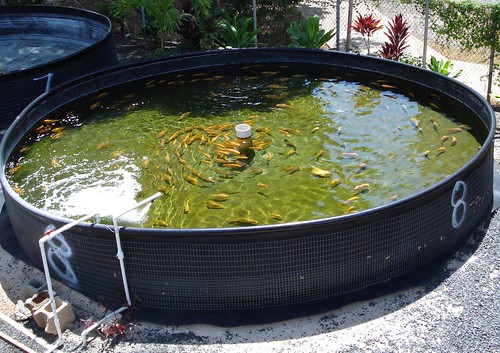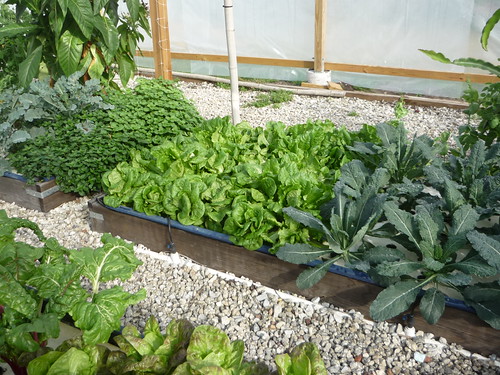
If you’re wondering what aquaponics is, you’re not alone. Tracing its roots back to the Aztecs and rice cultivation in South China, aquaponics is a combination of aquaculture and hydroponics – growing fish and plants together in a symbiotic system. Basically, the plants keep the water clean for the fish to grow, and the fish fertilize the plants. Both help the other to survive and thrive.
A wide variety of foods—lettuce, beans, broccoli, cucumbers, peas, herbs, strawberries, melons, and tomatoes, for example—all flourish through aquaponics farming.
The Hawaii Department of Agriculture, in cooperation with the Aquaculture Program of the University of Hawaii, is surveying grocery retailers and restaurants in Hawaii to explore the viability of aquaponic farming in the market place. They are looking at several factors, such as market acceptance, demand level, preferred product form, packaging and price points for produce and fish produced by aquaponics farms. Their research will help farmers better understand the benefits and viability of aquaponics as a method for raising fish and specialty crops simultaneously.
This project is the first aquaponics project ever awarded a grant through USDA’s Federal-State Marketing Improvement Program (FSMIP). The grants are designed to support a wide range of projects, fostering work between the States, academia, farmers, and many other stakeholders.
Aquaponics farming is one example of the research-based, innovative projects USDA supports, with the goal of improving the long-term efficiency and sustainability of American agriculture.
Administered by USDA’s Agricultural Marketing Service (AMS), FSMIP provides matching funds on a competitive basis to state agencies and universities to assist in exploring new market opportunities for U.S. food and agricultural products. To find out more about other FSMIP projects, visit www.ams.usda.gov/FSMIP.

